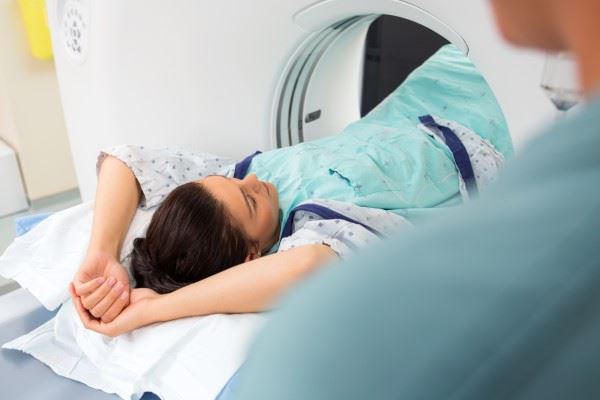-
Home
-
Abdominal CT Scans: What You Need To Know
Abdominal CT Scans: What You Need To Know
August 14, 2024
 An abdominal CT (Computed Tomography) scan is a vital diagnostic tool that provides detailed cross-sectional images of the abdomen, including various internal organs, blood vessels, and other structures. This non-invasive procedure has become a cornerstone in diagnostic radiology due to its ability to produce high-resolution images, aiding in the diagnosis and management of various conditions, particularly those involving abdominal pain.
An abdominal CT (Computed Tomography) scan is a vital diagnostic tool that provides detailed cross-sectional images of the abdomen, including various internal organs, blood vessels, and other structures. This non-invasive procedure has become a cornerstone in diagnostic radiology due to its ability to produce high-resolution images, aiding in the diagnosis and management of various conditions, particularly those involving abdominal pain.
Indications for Abdominal CT Scans
Abdominal CT scans are commonly used for a wide range of clinical indications, including:
- Acute Abdominal Pain: To identify causes such as appendicitis, diverticulitis, pancreatitis, or bowel obstruction.
- Trauma: To assess internal injuries following blunt force or penetrating trauma, including damage to the liver, spleen, kidneys, or intestines.
- Cancer Detection and Staging: To detect and assess the extent of tumors in internal organs such as the liver, pancreas, and kidneys.
- Infection and Inflammation: To evaluate abscesses, infections like pyelonephritis, and inflammatory conditions such as Crohn’s disease.
- Vascular Disorders: To detect aneurysms, thrombosis, or other vascular abnormalities within the abdominal cavity.
- Postoperative Complications: To monitor for complications like abscesses or leaks following surgery.
How Abdominal CT Scans Work
Abdominal CT scans utilize X-ray beams combined with computer processing to create detailed cross-sectional images of the abdomen. During the procedure, the patient lies on a motorized table that slides into the CT scanner, a large, doughnut-shaped machine.
As the patient is positioned within the scanner, X-ray beams rotate around the body, capturing multiple images from different angles. These images are then processed by a computer to create cross-section images, which can be stacked to form a three-dimensional representation of the abdominal structures.
The Role of Contrast Agents
IV contrast is often used in abdominal CT scans to enhance the visibility of blood vessels, organs, and other tissues. Depending on the area being examined, this contrast dye can be administered orally, intravenously, or both. When IV contrast is used, patients may experience a metallic taste in their mouth or a warm sensation throughout their body.
Preparing for an Abdominal CT Scan
Preparation for a scan of the abdomen may vary depending on the reason for the scan and whether a contrast dye is used. Common preparation steps include:
- Fasting: Patients may be asked to refrain from eating or drinking for several hours before the scan, especially if contrast dye will be used.
- Clothing and Jewelry: Patients are typically asked to wear a hospital gown and remove any jewelry or metal objects that could interfere with the imaging.
- Medical History: It’s important to inform the healthcare provider of any allergies, particularly to contrast dye, and any history of kidney problems or diabetes, as these may influence the use of contrast agents.
The Procedure
The actual scanning process usually takes about 10 to 30 minutes, although the preparation and post-scan processes may add to this time. Here’s what to expect during the procedure:
- Positioning: The patient lies on the CT table, usually on their back. Straps and pillows may be used to help maintain the correct position.
- Contrast Administration: If contrast dye is needed, it may be given before the scan.
- Imaging: The table moves through the scanner, and the patient may be asked to hold their breath for short periods to reduce motion blur in the images. The beams rotate around the abdomen, capturing the necessary cross-sections.
- Post-Scan Monitoring: After the scan, particularly if contrast dye was used, the patient might be observed for a short time to ensure there are no adverse reactions.
Risks and Considerations
While abdominal CT scans are generally safe, they do carry some risks:
- Amount of Radiation: CT scans expose patients to more radiation than standard X-rays. Although the risk from a single scan is low, cumulative exposure over time can increase the risk of cancer.
- Allergic Reactions to Contrast Dye: Although rare, some patients may have an allergic reaction to contrast agents, ranging from mild itching to more severe reactions like anaphylaxis.
- Kidney Problems: In patients with pre-existing kidney conditions, the contrast dye used in CT scans can sometimes lead to nephropathy, a condition where kidney function deteriorates.
- Side Effects: Common side effects from the contrast dye include a warm sensation, a metallic taste, and, in rare cases, nausea or hives.
Interpretation of Results
A radiologist interprets the images obtained from an abdominal CT scan. The radiologist analyzes the cross-sectional images for abnormalities and provides a report to the referring physician, who discusses the results with the patient. Findings can range from normal anatomical structures to evidence of disease, injury, or other abnormalities.
Understanding abdominal CT scans is essential for both healthcare professionals and patients alike. By knowing what happens during an abdominal CT scan, what it can detect, and its limitations, you can better appreciate the value of this imaging tool in diagnosing and managing various health conditions. Whether you are interpreting scan results as a healthcare provider or undergoing the procedure as a patient, being informed about abdominal CT scans empowers you to make confident decisions about your healthcare journey.
Want to learn more? Explore these additional resources on medical imaging: